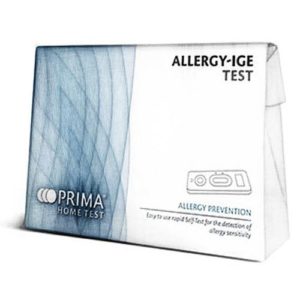An allergy to dairy or cow’s milk is quite common, and there are several symptoms that you can look for when deciding what your next step should be. We are going to help you recognize those symptoms while offering advice on the steps you can take to relieve them.
It should be noted that the symptoms of cow milk allergy can differ from person to person, although there are some that are common among just about everyone, such as:
Common cow’s milk allergy (CMA) symptoms:
- Babies will generally experience colic
- Itching, rashes, swelling, eczema, and other skin reactions
- Nausea or vomiting
- Flu-like symptoms such as fever, runny nose, and sneezing
- Stomach cramps and abdominal pain
- Acid reflux
- Breathing issues
Milk Allergies in Children
One of the most commonly asked questions about milk allergies is about how it happens in the first place. In most cases, the allergy is developed at an early age, with as many as 7% of babies and young kids experiencing issues with milk. The number of children affected is on the rise, perhaps because detection of the allergy has improved.
As is the case with any allergy, your body does all it can to defend you from what it sees as an attack from a harmful substance. As part of the defence mechanism, your body will create antibodies known as IgE. The problem here is that the chemicals produced will often adhere to cells, after which they produce histamines that deliver an allergic reaction.
Milk protein is the main culprit in milk allergies. The two proteins found in milk, alpha-casein and beta-lactoglobulin, are the ones responsible for the allergic reactions. When someone with a milk allergy consumes milk or milk products, the body perceives these proteins as dangerous and starts producing IgE antibodies to fight them off. The antibodies then trigger the release of histamines and other chemicals that cause allergic symptoms like hives, swelling, and digestive problems.
Milk allergy is different from lactose intolerance, which is the inability to digest lactose, a sugar found in milk. Lactose intolerance is not an allergy, and it doesn’t involve the immune system. However, some children with milk allergies may also have lactose intolerance symptoms because the allergy damages the lining of the intestines, which can lead to lactose intolerance.
Milk allergies can be tricky to diagnose, as the symptoms can vary widely and be mistaken for other conditions. Common symptoms include skin rash, hives, swelling, wheezing, coughing, abdominal pain, diarrhoea, and vomiting. If you suspect your child has a milk allergy, it’s important to consult a healthcare professional for proper diagnosis and treatment.
The best treatment for milk allergies is to avoid milk and milk products altogether. This can be challenging, as milk is a common ingredient in many foods, including baked goods, cheese, yogurt, and even some medicines. Reading food labels carefully and avoiding cross-contamination is essential for managing milk allergies.
In conclusion, milk allergies are a common issue among children, and it’s important to understand how they occur and how to manage them. If you suspect your child has a milk allergy, consult a healthcare professional for proper diagnosis and treatment. With proper management, children with milk allergies can lead healthy, happy lives.

How to Live with A Milk Allergy
A milk allergy is one that is going to potentially going to have an impact on your everyday life, mostly because there are so many products that contain milk or milk-derived proteins.
Common items containing cow’s milk and derived proteins:
- Ghee (clarified butter often used in Indian cooking)
- Margarine
- Curd
- Milkshakes and other milky drinks
- Yoghurt and fromage frais
- Cheese
- Butter
- Cream and ice cream
- Condensed milk
One of the most effective ways to adapt to your allergy is to steer clear of processed foods in favour of foods made at home. You can make the process fun by creating your own recipes or searching online for alternatives. Items that call for milk should be made using almond milk, soy milk, or some other derivative other than cow’s milk.
Of your options, it is probably soy milk that serves as the best alternative, as it is lower in fat, high in protein, and contains no cholesterol. You can even use soy milk when baking, so just get in the habit of using your chosen cow’s milk replacement when you are cooking or baking at home. The most difficult part of the process is taking the time to read labels at the grocery store to see what items you need to avoid. Once you get in the habit, though, shopping becomes second nature, as does creating meals using your alternative items.

Home Allergy Test Kits
For people who suffer from allergies, the symptoms can be frustrating and sometimes debilitating. From itchy eyes to breathing difficulties, allergies can severely impact your quality of life. Fortunately, there are a number of options available to help you identify and manage your allergies, and one of the most accessible and convenient is a home allergy test kit.
These test kits are designed to provide you with fast and reliable results, so that you can take control of your health and avoid potential allergic reactions. With a wide range of options available, you can find an allergy test kit that suits your specific needs, whether you are testing for food or environmental allergies.
Using a home allergy test kit is simple and straightforward. All you need to do is take the test, interpret the results, and use the information to make informed decisions about your health and well-being. For those who have been experiencing symptoms without knowing the root cause, ruling out basic allergies can be a significant relief.
If you experience symptoms such as redness on the skin, a rash, lacrimation, or repetitive sneezing, it may be time to consider a basic allergy test such as the Prima Home Allergy Test Kit. For more specific requirements, you may want to consider a dedicated test kit such as a Cat Allergy Test Kit or Airborne Allergy Screen Kit.
If you suspect you have an allergy to milk, for example, you have a couple options. You can talk to your doctor, or you can use a home testing kit for a quick result. The Milk Allergy Test Kit from Zoom Health is one such kit that can provide you with accurate and reliable results in just a few minutes.
Investing in a home allergy test kit is a smart choice for those who are struggling with allergies and looking for a convenient and accessible way to identify potential triggers and take control of their health. With these kits, you can quickly and easily determine whether you have allergies and take steps to manage and avoid potential reactions and intolerances. Don’t let allergies control your life – take control with a home allergy test kit today.
Main Photo: Anthony Cunningham for Zoom Health
Inset Photo Credit: “Glass of milk” (CC BY 2.0) by Zeyus Media
Zoom Health is a leading UK supplier of Home Health Tests and Earplugs
This post was originally published in 2018. It was last updated in June 2023.





